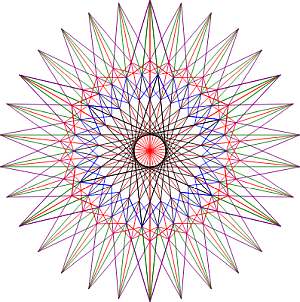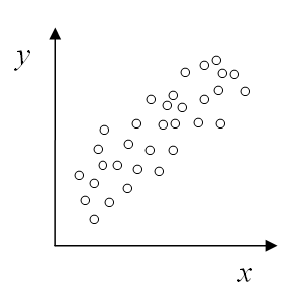RREF Calculator
Instructions: Use this step-by-step calculator reduced row echelon form calculator (RREF) to put a given matrix you provide in reduced row-echelon form.
Modify, if needed, the size of the matrix by indicating the number of rows and the number of columns. Once you have the correct dimensions you want, you input the matrix (by typing the numbers and moving around the matrix using "TAB")
Number of Rows = Number of Cols =Matrix RREF Calculator
The reduced row echelon form is one of the most useful process in Linear Algebra, and it can serve multiple purposes.
The RREF is usually achieved using the process of Gaussian elimination. In terms of applications, the reduced row echelon form can be used to solve systems of linear equations, to compute the inverse of a matrix, or to find useful matrix decompositions
What is the rref of a matrix?
The idea of the row echelon form is to construct systematically an equivalent matrix via the use of invertible elementary matrices so get to a row echelon form, which is a generalized form of a triangular form.
Using a row reduction approach, we can get a matrix into this row-echelon shape, using non-zero pivots.

Advantages of the RREF
- This RREF calculator reduces the matrix to a form that is useful for many purposes
- For example, if the final RREF form of the given matrix is the identity, the matrix is invertible
- Augmenting the original matrix, finding the RREF form allows to construct the inverse using elementary matrices
- It provides a systematic way to solve systems of linear equations.
How do you calculate the reduced row echelon form?
There are different approaches that are possible and that you can use. But the main idea is to use non-zero pivots to eliminate all the values in the column that are below the non-zero pivot, which the basis of the procedure called Gaussian Elimination.
One of the crucial elements on this reduction is to know if a matrix is in rref, so we stop the process when it is.
The following steps should be followed:
Step 1: Check if the matrix is already in reduced row echelon form. If it is, then stop, we are done.
Step 2: Look at the first column. If the value in the first row is not zero, use it as pivot. If not, check the column for a non zero element, and permute rows if necessary so that the pivot is in the first row of the column. If the first column is zero, move to next column to the right, until you find a non-zero column.
Step 3: Use the pivot to eliminate all the non-zero values below the pivot.
Step 4: Normalize the value of the pivot to 1.
Step 5: Use the pivot to eliminate all the non-zero values above the pivot.
Step 6: After that, if the matrix is still not in row-echelon form, move one column to the right and one row below to look for the next pivot.
Step 7: Repeat the process, same as above. Look for a pivot. If no element is different from zero at the new pivot position, or below, look to the right for a column with a non-zero element at the pivot position or below, and permutate rows if necessary. Then, eliminate the values below the pivot.
Step 7: Continue the pivoting process until the matrix is in reduced row-echelon form.
How do you calculate reduced row echelon on a calculator?
Not all calculators will conduct Gauss-Jordan elimination, but some do. Typically, all you need to do is to is to input the corresponding matrix for which you want to put in RREF form.
Observe that in order to have a reduced row echelon form you need to have zeros ABOVE the pivot too. If you don't need that you can use this row echelon form calculator, which does not reduce values above the pivot
This calculator will allow you to define a matrix (with any kind of expression, like fractions and roots, not only numbers), and then all the steps will be shown of the process of how to arrive to the final reduced row echelon form.
Most calculators will use an elementary row operations to do the calculation, but our calculator will show you exactly and in detail which elementary matrices are used in each step.
How do you solve for a RREF solution
It depends a bit on the context, but one way is to start with a system linear of equations, represent it in matrix form, in which case the RREF solution when augmenting by right hand side values.
Another options is to start with a matrix, and augment it by the identity matrix, in which case the RREF solution will lead to the inverse of the original matrix.

Reduced row echelon form example
Question: Suppose that you have the following matrix:
\[A = \begin{bmatrix} \displaystyle 2&\displaystyle 3&\displaystyle 1\\[0.6em]\displaystyle 2&\displaystyle 7&\displaystyle 2\\[0.6em]\displaystyle 2&\displaystyle 3&\displaystyle 1 \end{bmatrix} \]Find its reduced echelon form, showing all the steps and the corresponding elementary matrices.
Solution: The provided matrix is a \(3 \times 3\) matrix.
We need to find the reduced row echelon form of this matrix.
Step 1: Operations used to reduce column \(1\):
\((1) - R_{ 1} + R_{ 2} \rightarrow R_{ 2}, \quad (2) - R_{ 1} + R_{ 3} \rightarrow R_{ 3}\)
Step 2: Operation used to reduce column \(1\):
\((1) \frac{1}{2} R_{ 1}\)
For column \(2\), all the elements below the pivot are already zero, so we don't need to eliminate.
Step 3: Operations used to reduce column \(2\) above the pivot:
\((1) \frac{1}{4} R_{ 2}, \quad (2) -\frac{3}{2} R_{ 2} + R_{ 1} \rightarrow R_{ 1}\)
Step 4: For column \(3\) we don't find a pivot because the column is zero so we move to the next column.
Hence, we conclude that the matrix in RREF form is:
\[ \begin{bmatrix} \displaystyle 1&\displaystyle 0&\displaystyle \frac{1}{8}\\[0.6em]\displaystyle 0&\displaystyle 1&\displaystyle \frac{1}{4}\\[0.6em]\displaystyle 0&\displaystyle 0&\displaystyle 0 \end{bmatrix} \]


